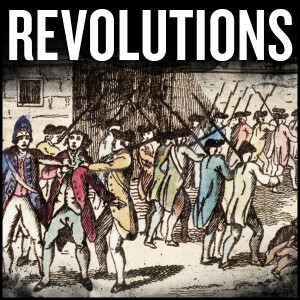

Read Beat (...and repeat)
https://rss.buzzsprout.com/1950812.rssEpisode List

"Hollywood's Spies" by Laura Rosenzweig
The debate lingers: why didn’t Hollywood’s studios produce anti-Nazi pictures before war was all but imminent in the 1930s?Plenty has been written about the lack of films that might have alerted the American public to what was happening in Europe at the time.But Laura Rosenzweig, the author of Hollywood’s Spies, says attention also needs to be focused on the political activity going on around Hollywood in Southern California in the 1930s, activity that was being orchestrated from Berlin. The author points out that, since most of the Hollywood studios were run by Jewish immigrants, there was concern that these men, the most visible Jews in America, might be targeted for using the movies to push their own agenda. There was even concern that denouncing Hitler could increase antisemitism at the time, she said. One has to consider the widespread impact of the Depression in the 30s, a time when America’s national policy was to stay out of European affairs. It was also a time when political ideologies were vying for acceptance. You didn't know if it was going to be communism or fascism or something else--people were searching for answers, said Rosenzweig.Film historian Thomas Doherty noted it was MGM boss Sam Goldwyn who became famous for saying that if you want to send a message, use Western Union. The film industry’s own production code also restricted movies from reflecting unfairly on any foreign country, he said. The Third Reich also wasn’t above exerting pressure on Hollywood, itself, as German consul Georg Gyssling was known for lobbying hard to keep Nazi references off the big screen.Germany was also organizing support for its policies in Los Angeles, said Rosenzweig, who explored records maintained at the California State University Northridge library that contain thousands of documents relating to those efforts. “The archives have files on more than 400 right-wing groups in the Southern California area,” she said.Los Angeles became a hot spot for German propaganda, pro-Nazi and anti-Jewish materials that were written in English in Germany and then shipped into the West Coast for distribution throughout the L.A. area, said Rosenzweig.One of the records from the Northridge collection recalls a meeting at the Hillcrest Country Club in Los Angeles in 1934 where top executives from the major studios convened to hear what attorney Leon Lewis had uncovered in his surveillance of pro-German groups in the L.A. area, she said. Lewis, who had been the first executive secretary of the Anti-Defamation League in Chicago before moving to California in the 1930s, employed a “spy network” made up mostly of U.S. veterans who, after infiltrating these organizations like Friends of the New Germany and the Silver Shirts reported back on what was going on and the torrent of hate that was being parceled out to U.S. citizens.Roesnzweig said that Lewis hasn’t received the credit he deserves for uncovering a vast, well-financed plot to foster insurrection in California, a campaign that was run out of Berlin. She hopes to produce a piece on his singular efforts in the future.

"Your Money" by Carl Richards
If you want to find a relaxed approach to planning your finances, Carl Richards has it for you, complete with 101 simple sketches: Your Money.It's an approach Richards employed as a financial writer for the New York Times for 10 years: using boxes, circles, and squiggly lines to illustrate basic messages about money.Two circles, one marked "things that matter," the other, "things I can control." The part where they intersect is darkened in with the message: "what I try to focus on."Richards said this is the first book on financial planning he's written in 11 years, and he wanted to keep it simple. So there are lots of pithy commentaries and plenty of white space to go along with the sketches that Richards is known for.Want a sample of chapter titles? There's "The Power of Pause," "Goals Are Guesses," and "Boring Pays Off."Richards' basic advice is to stay calm when it comes to handling money, a subject that no two people think about the same way, he notes.Don't worry about other people's fortunes, either, and understand that there's something he categorizes as financial pornography, those brazen media calls to action that can throw you off your game.He advocates budgeting simply so you know where you stand--not as some kind of punishment designed to force absolute accountability. Here's one more Richards ditty: the most powerful financial tool isn't math--it's your humanity.

"American Scary" by Jeremy Dauber
The arrival of the nuclear age ushered in yet another chapter in America’s horror history. Jeremy Dauber, the Columbia University professor who previously wrote a history of comics in this country, now digs a little deeper for American Scary.When John Hersey’s Hiroshima filled an entire issue of the August 31, 1946, issue of The New Yorker, the public learned what it was like to be incinerated by an atomic bomb. Other horrors were to come. Dauber starts in the American Republic’s early days when the Devil might have been walking in the forests that flourished at the time. There was slavery—categorized by Dauber as “the American horror story”--an institution that led to a gruesome civil war and divisions that haven’t entirely healed to this day. There were the horrors faced by Native Americans. On the literary side, you have Edgar Allan Poe and H.P. Lovecraft, and we’re off to the races. Ray Bradbury and Stephen King follow, but Dauber even finds horror in a copy of Good Housekeeping, where a 1944 story called “The Storm” proved to be disturbing.The 20th century was loaded with horrors on the big screen, with Frankenstein, Dracula, and the Wolf Man becoming Hollywood’s holy trinity of horror. But those mythical creatures didn’t seem so scary after World War II. Once mankind realizes that all life could be snuffed out across the entire planet by a single act of madness. Movies made the point. You have Them (irradiated ants) and, among the many cinematic giants stirred up in the atomic age, It Came From Beneath the Sea, a giant octopus disturbed by an A-bomb test. You had paranoia (Invasion of the Body Snatchers). You even had arbiters from outer space warning us to back off the bomb (The Day the Earth Stood Still), a film our president apparently needs to see.The Thing From Another World took the UFO craze and turned it on its head in 1951, setting up John Carpenter’s 1982 shape-shifting remake. Dauber made the point that these films (and others like them) made you wonder just who your friends were.You don’t need a horror history to recognize that Jaws and The Exorcist were creepy. But Dauber adds the Rocky Horror Picture Show to his list of 70s standout films.As comprehensive as Dauber’s compilation is, I would like to have seen more radio horror (Arch Oboler et al) included and at least some reference to TV’s Outer Limits (the 1963 B&W version).Perhaps inspired by American Scary, Dauber just produced Press One for Invasion, a novel for juvenile readers about an alien invasion through the eyes of a cell-phone-toting youngster.

"They're Playing Our Song" by Bruce Pollock
Bruce Pollock has been around. He’s covered a lot of ground. Best known as a rock critic, he's the author of 17 books on popular music, the founding editor of Guitar (for the Practicing Musician), a former record producer, and he’s been published in Playboy, Saturday Review, TV Guide, New York Times, Crawdaddy, and many others. You can find him online at brucepollockthewriter.com.His latest book, They’re Playing My Song, is a collection of articles based on interviews he’s done over the years with most of the great songwriters of our time: John Lee Hooker, Neil Sedaka, Gerry Goffin, Phil Ochs, Paul McCartney, Keith Richards, Frank Zappa, Jimmy Webb, Paul Simon, Jerry Garcia, Randy Newman, John Prine, Bruce Springsteen, to name a few. You get the idea.You learn things in this book. The songwriting team of Felice and Boudleaux Bryant wrote 24 songs for the Everly Brothers, among other things. Pollock ‘s interview with them sheds light on how a successful songwriting team broke into the business. They wrote letters to everybody they could think of. “My heart would crack with every rejection,” said Felice. “I thought, well maybe we’re not that good, because I was counting on the fact that the powers that be really knew, cause if they didn’t know they wouldn’t be there. I didn’t realize it’s all guesswork in their department, too.”Boudleaux added: “Some of the (songs) that we ourselves have liked personally the least have been songs that other people have flipped out on, and some of them have been pretty good hits. And some songs that we absolutely just were crazy about and loved and thought were just the best we’d ever written didn’t do a thing, and we still have them sitting around.”Pollock’s interviews span an era from the 1970s into the 21st century. So were there surprises? On Neal Peart of Rush: “Would you expect the drummer of a world-renowned arena-resounding rock band to be conversant with the subtleties of black humor?”“He was an intellectual,” said Pollock, who, in a 1986 interview, recalled what Peart had to say about his favorite writer: “To me, Tom Robbins is the quintessential modern writer because he’s funny, he’s profound, he’s sexy, he’s irreverent, he’s dirty, he’s hip. He’s everything I would like modern writing to be.”Frank Zappa, often the contrarian, proved quite polite, said Pollock. John Sebastian talked about “magic moments” in the studio that were responsible for the string of hits he composed for the Lovin' Spoonful in the 1960s.Sometimes it’s Pollock’s endnotes following the article that stay with you: “The erratic, sporadic, and quintessentially chaotic career of Andy Partridge, in and out of XTC, with various spinoff groups and album reconfigurations, continued into the twenty-first century and as yet shows no signs of relenting.”Pollock’s concise collection takes you across the board when it comes to insight regarding the music business.Oh yes, Pollock is also the author of the Rock Song Index, 7,500 of the most important songs from 1944 to 2000. No, it’s not a countdown, although I’d love a radio station to take a shot at it sometime. What would it take? Maybe a month or more. Waiting for number-one would take a true fan.

"We'll Prescribe You Another Cat" by Syou Ishida
The Kokoro Clinic for the Soul is back in business. That's the mental health clinic that appears for those who need it. We’ll Prescribe You Another Cat is a follow-up to We'll Prescribe You a Cat, a bestselling Japanese novel. Both books have been translated into English by E. Madison Shimoda.The clinic--with its unconventional doctor and forceful nurse--uses a prescribed cat to heal the emotional wounds of its patients. The sequel introduces a new cast of healing cats, from Kotetsu, a four-month-old Bengal who unleashes his boundless energy by demolishing bed linens and curtains, to tenacious and curious Shasha, who doesn’t let her small size stop her from anything, and the most lovable yet lazy cat Ms. Michiko.Shimoda said translating the book presented a challenge due to the magic present in Ishida's work. "I find the story uplifting. I'm personally a fan of cats," she said.The story fits into the fast-growing category of healing fiction, a subset of the cozy mystery, a genre that Shimoda said provides readers the opportunity to explore a little magic in everyday life.Shimoda is at work on the translation of Ishida's third book in the series, due out in this country next year.Based in New York, Shimoda is also considering translating select Japanese novels from the 1970s and 1980s, as well as preparing a manuscript of her own for publication.
Create Your Podcast In Minutes
- Full-featured podcast site
- Unlimited storage and bandwidth
- Comprehensive podcast stats
- Distribute to Apple Podcasts, Spotify, and more
- Make money with your podcast












